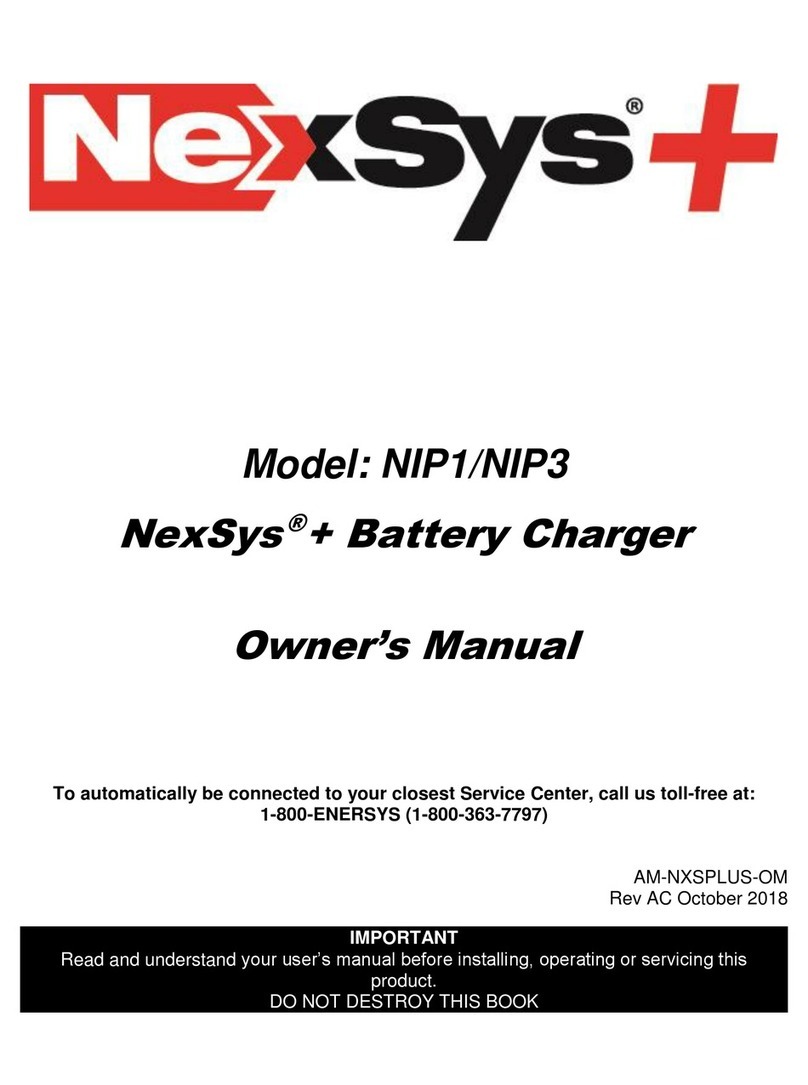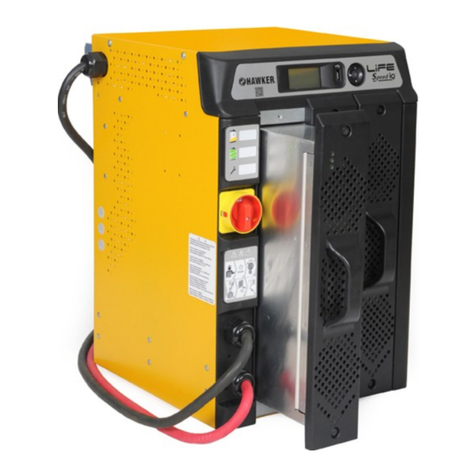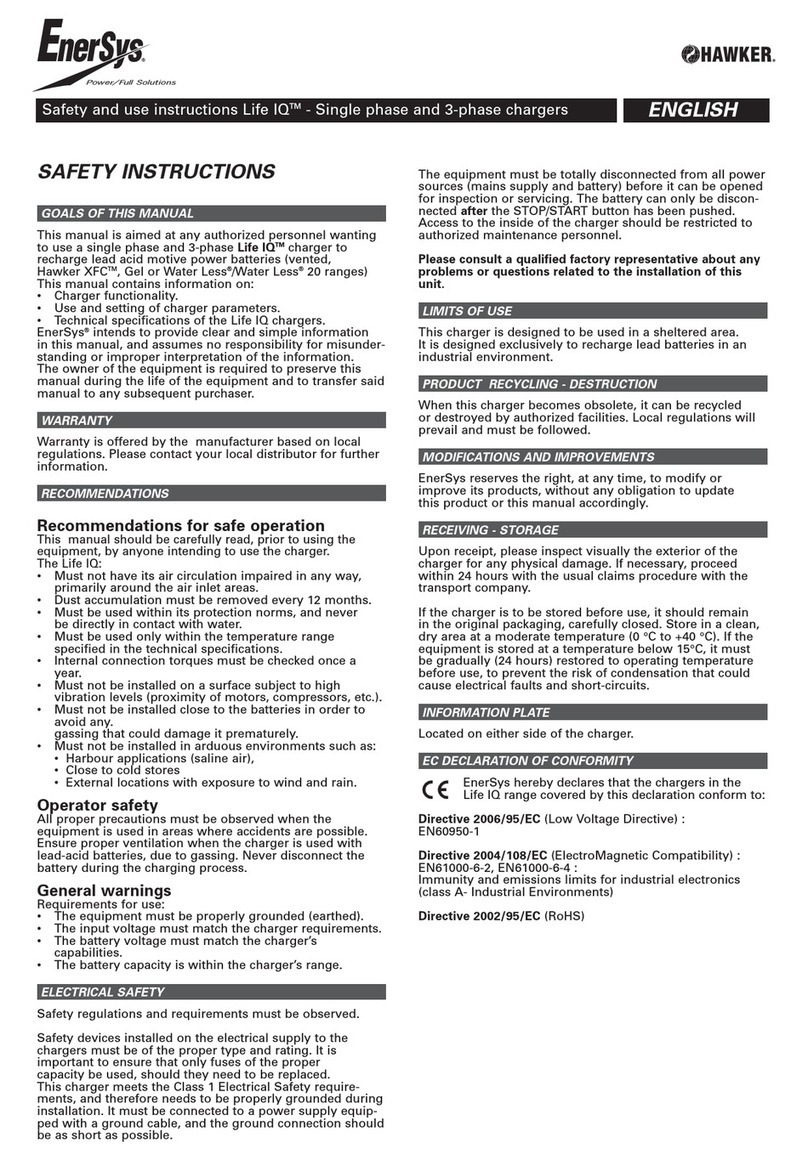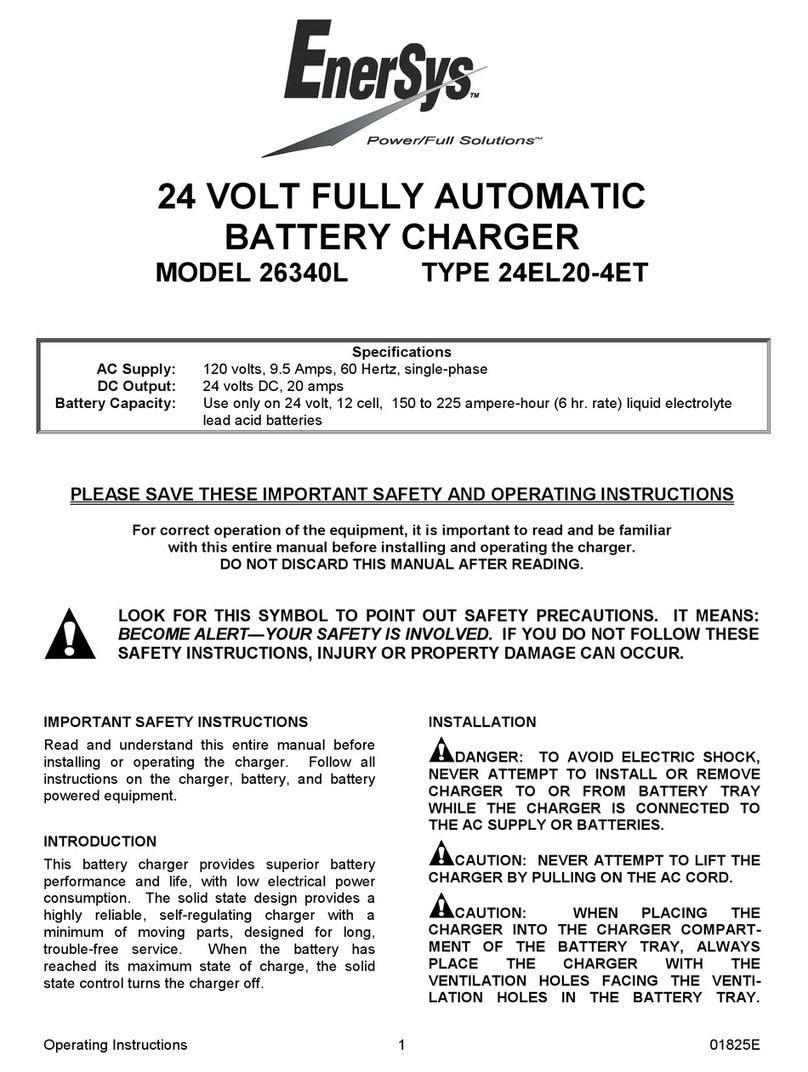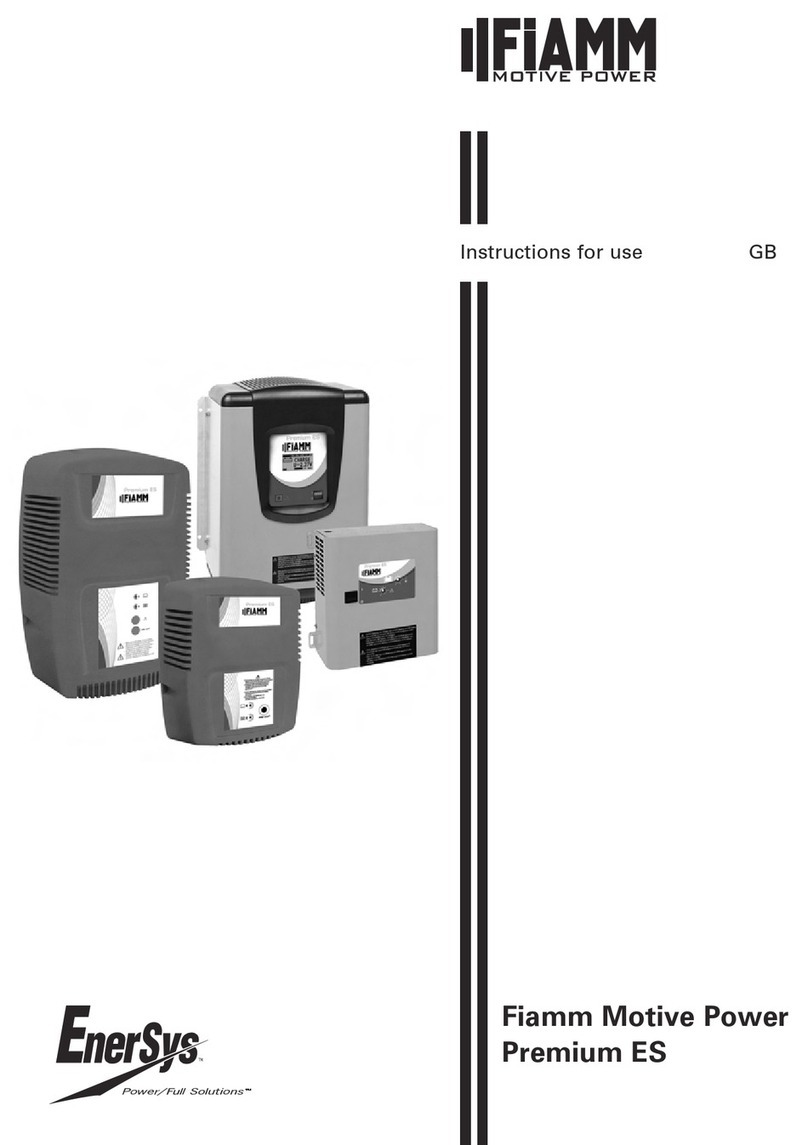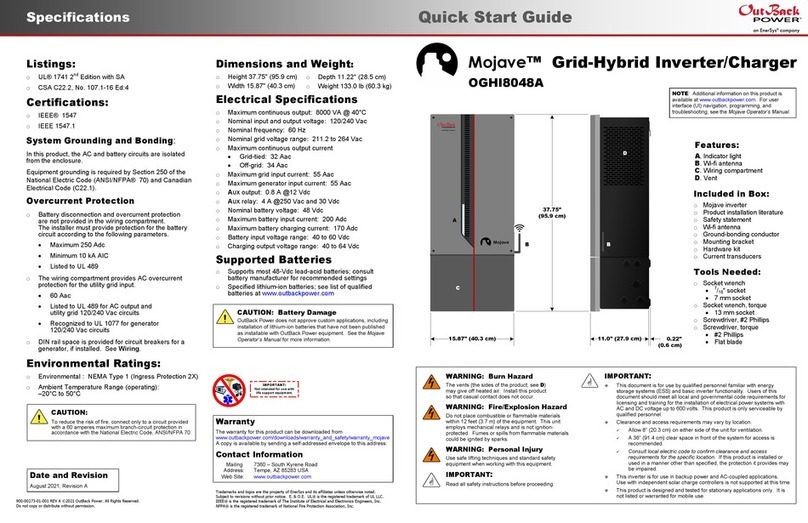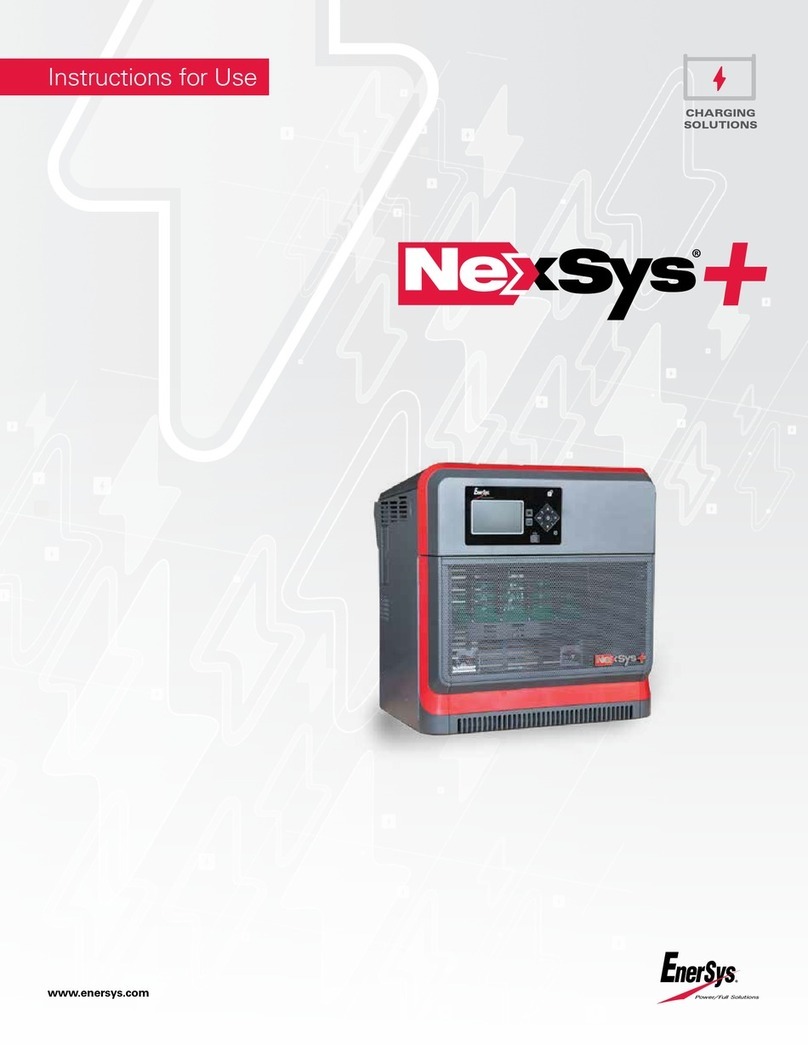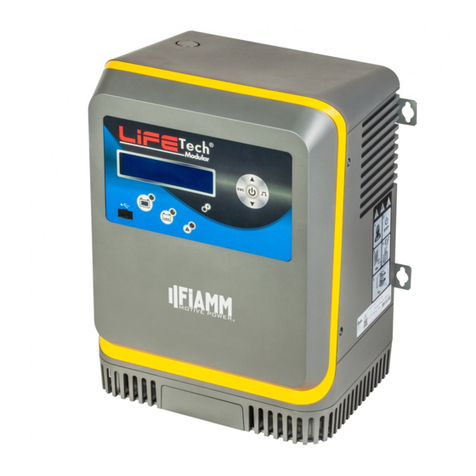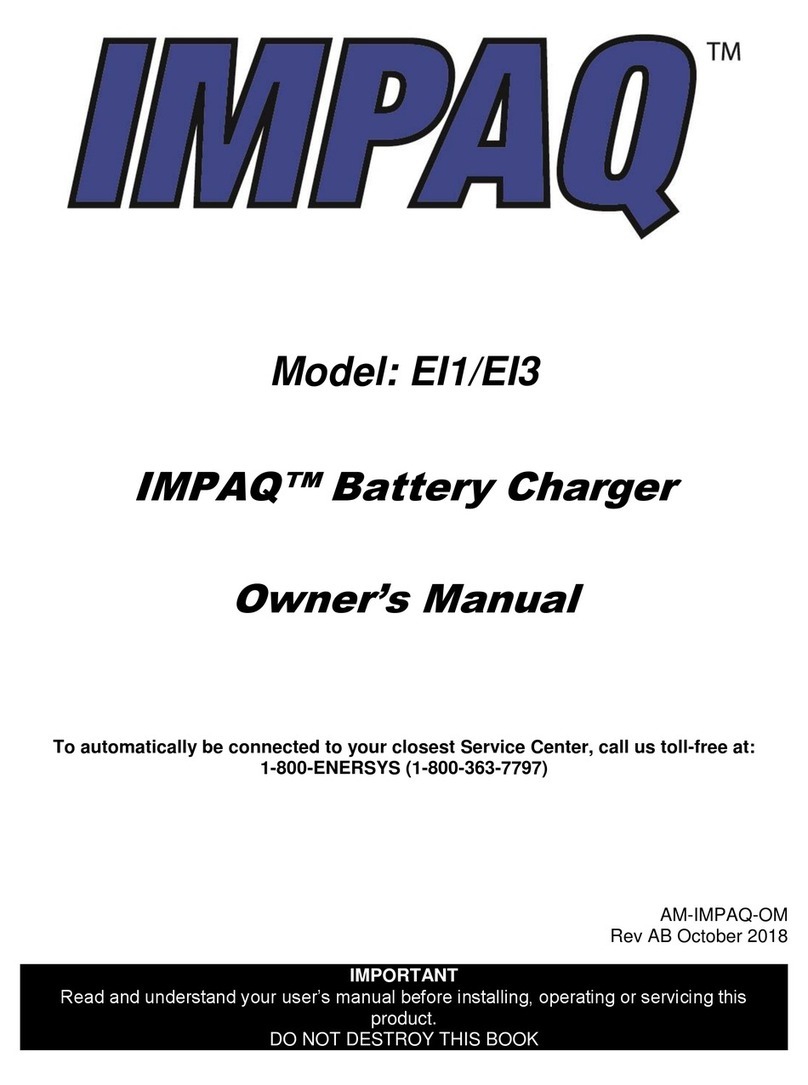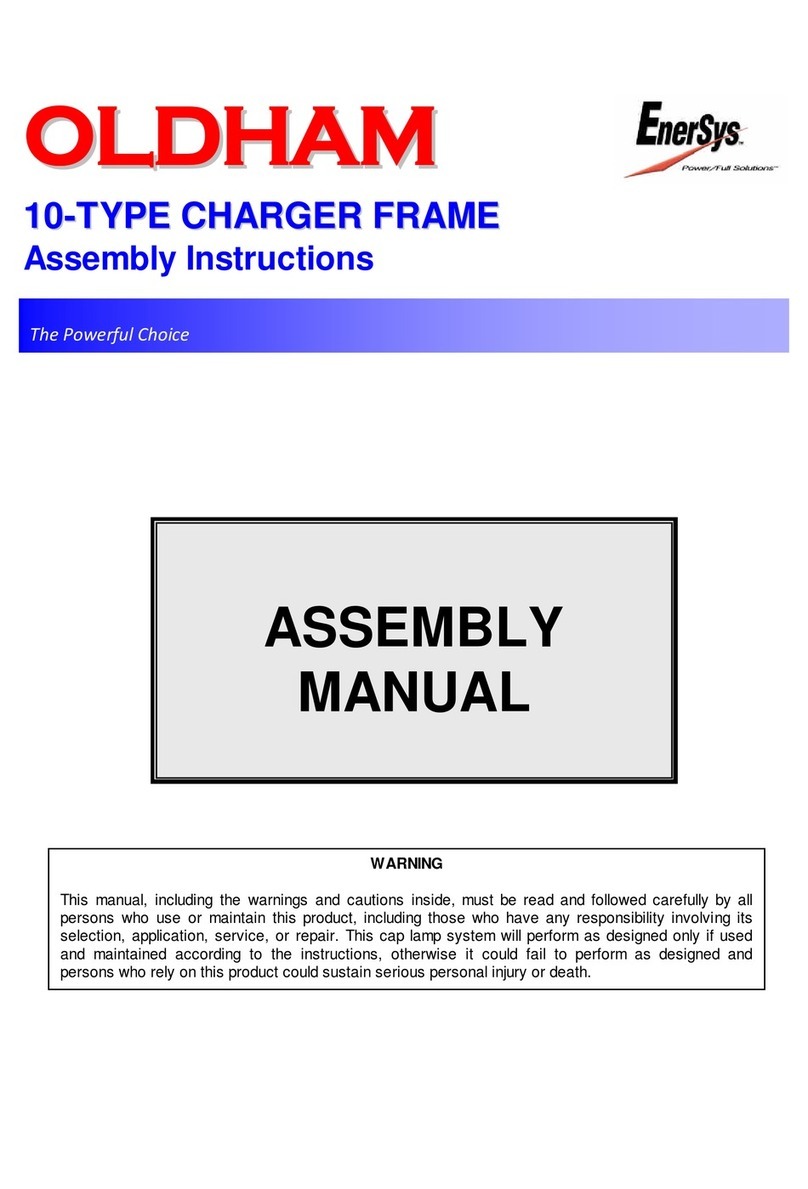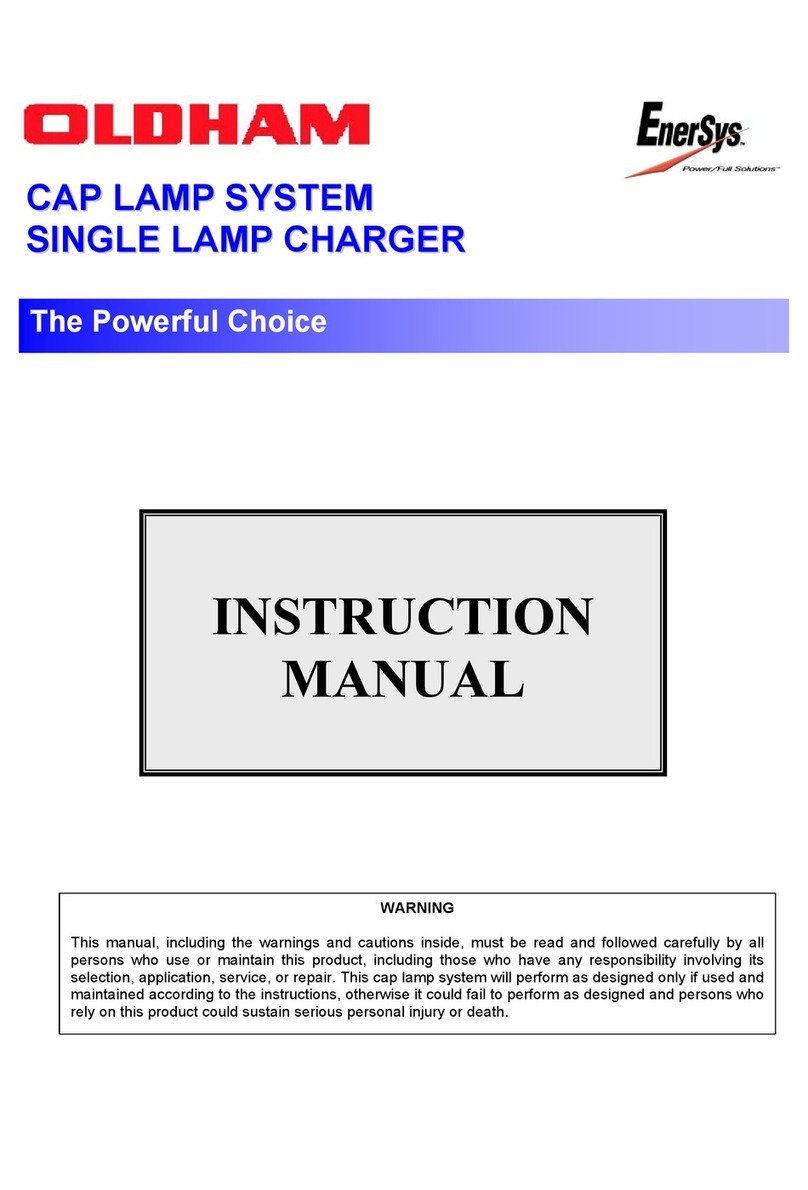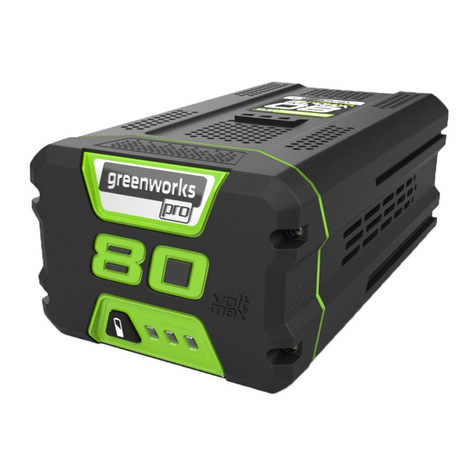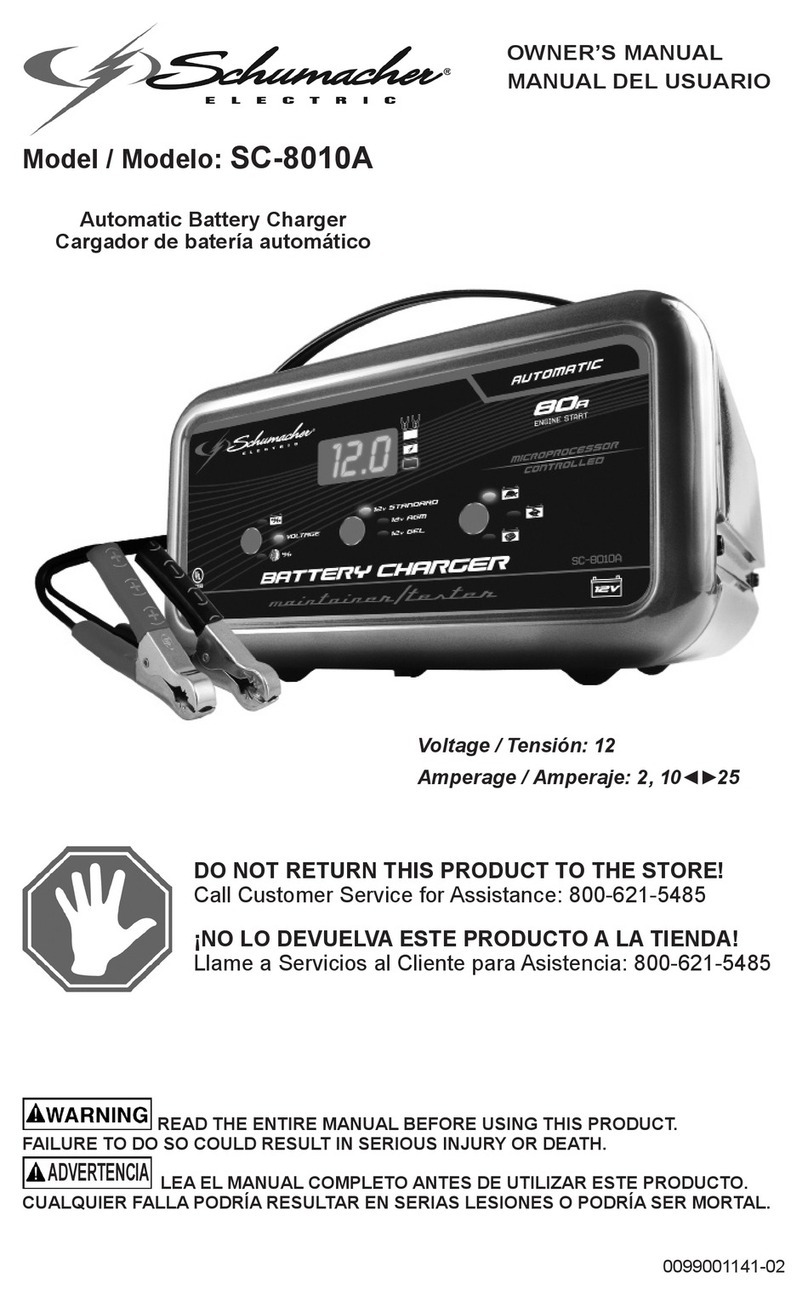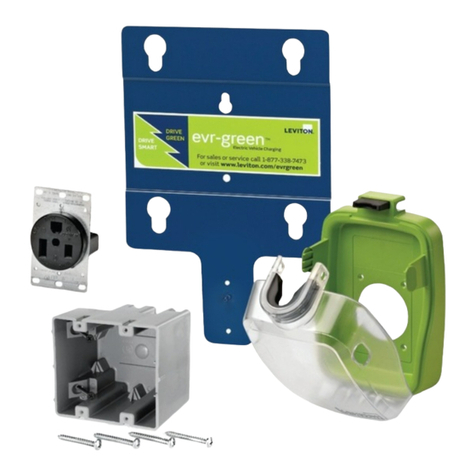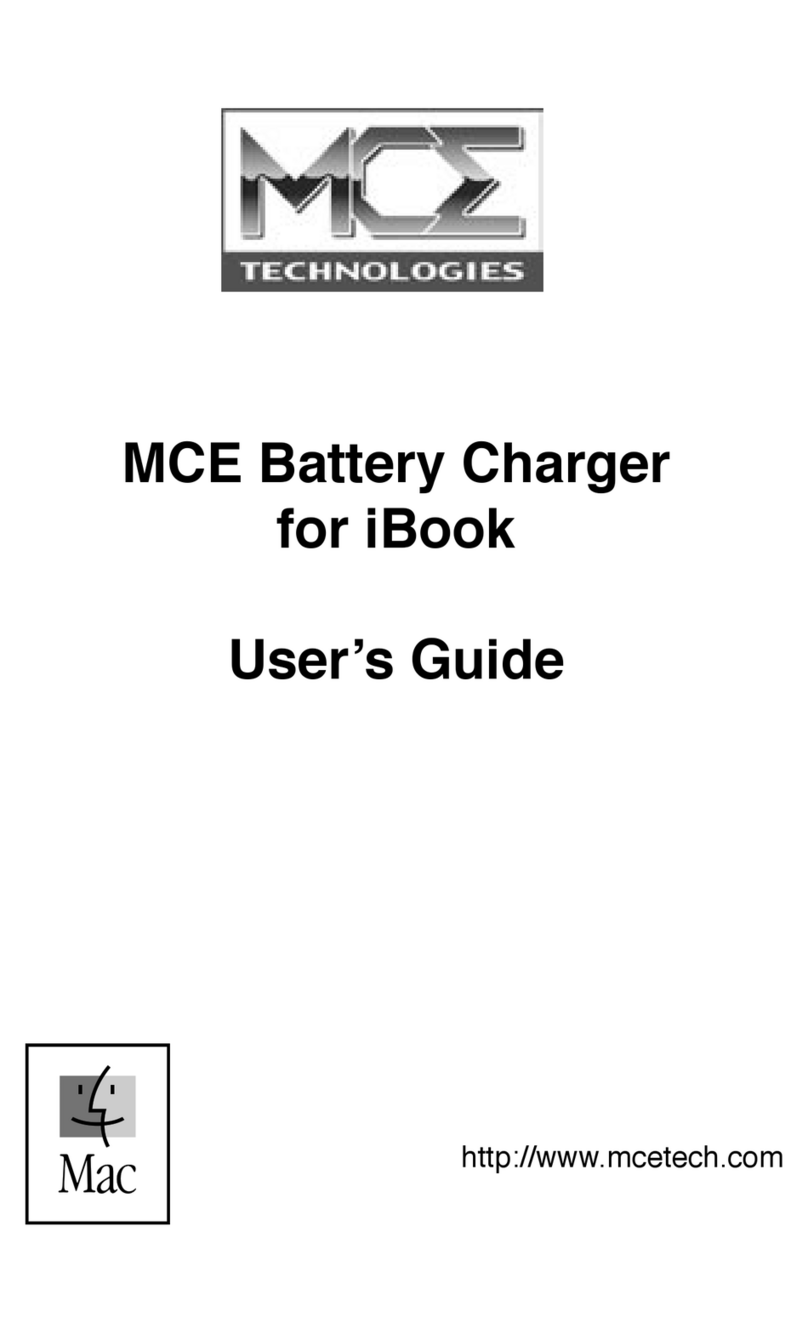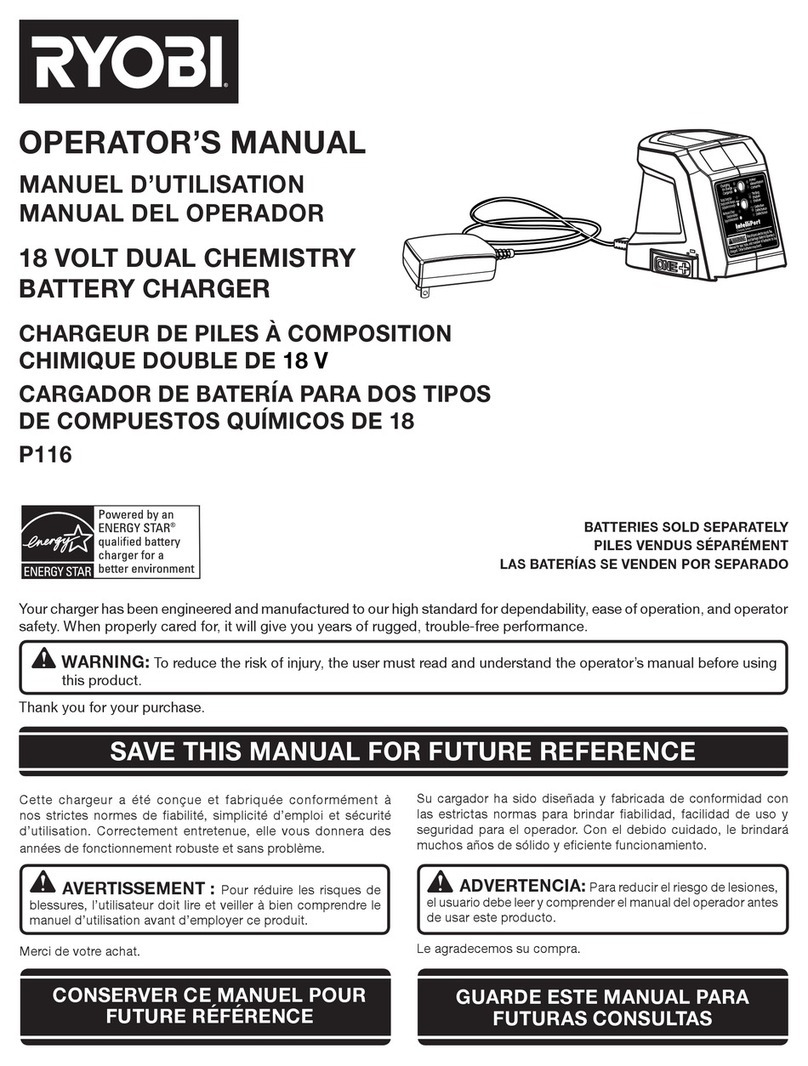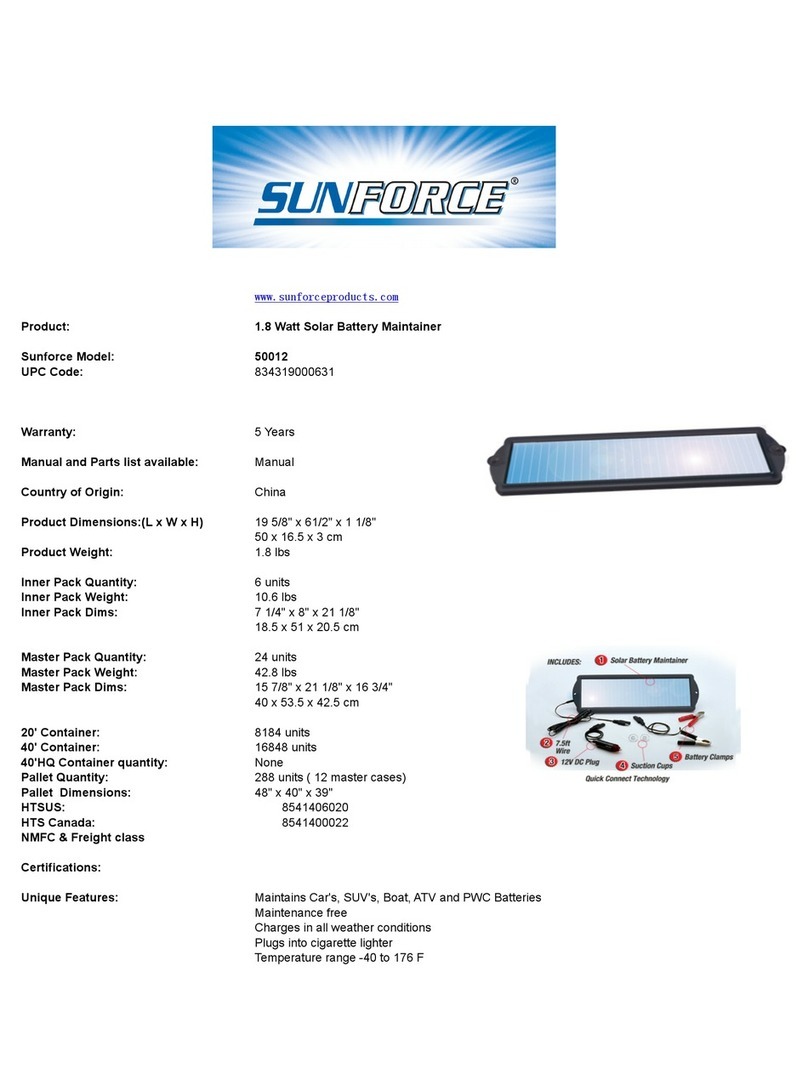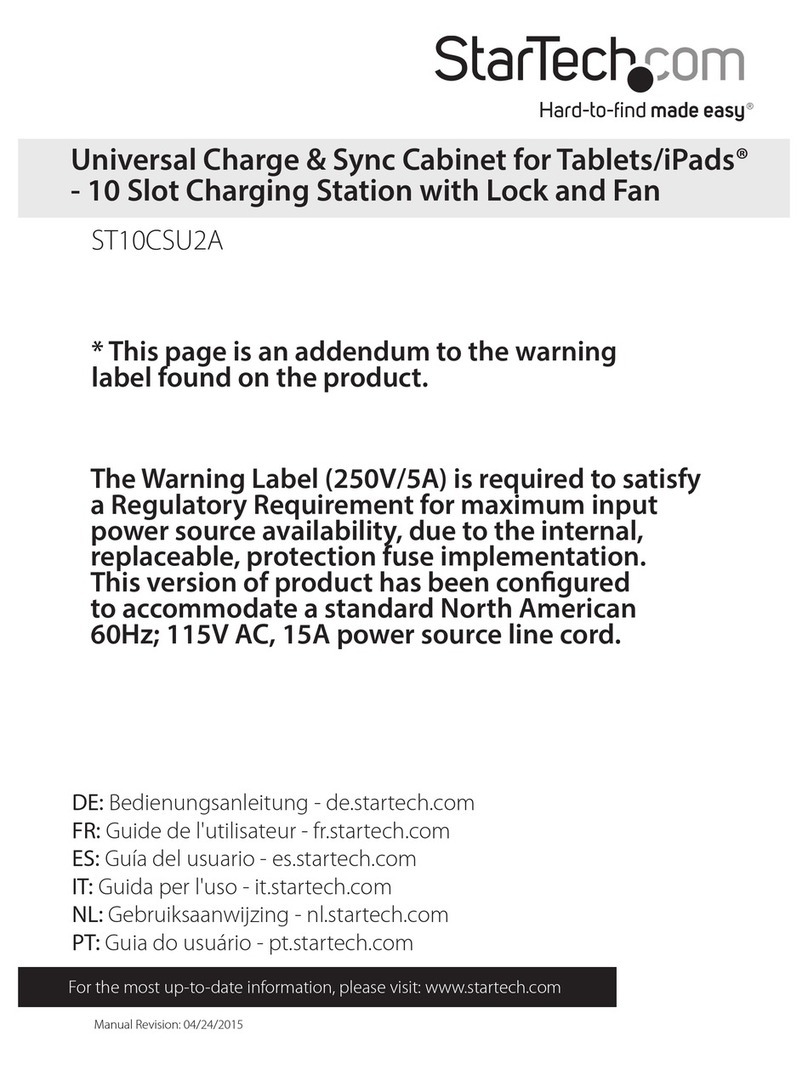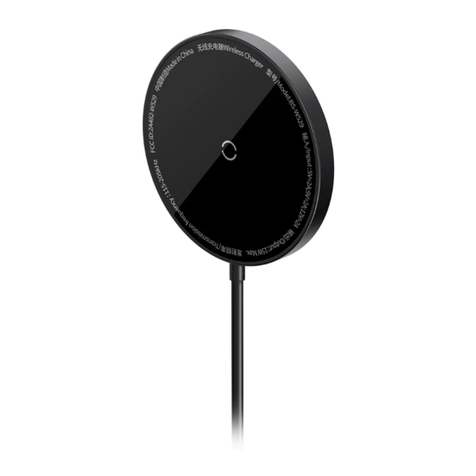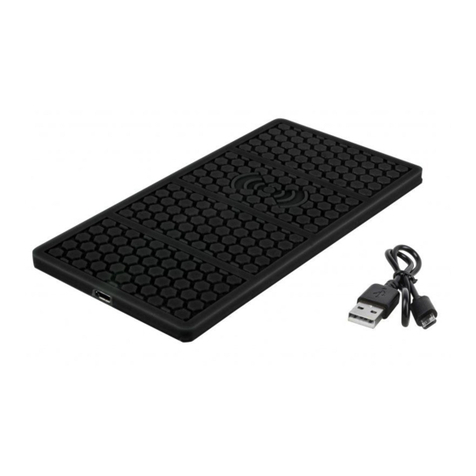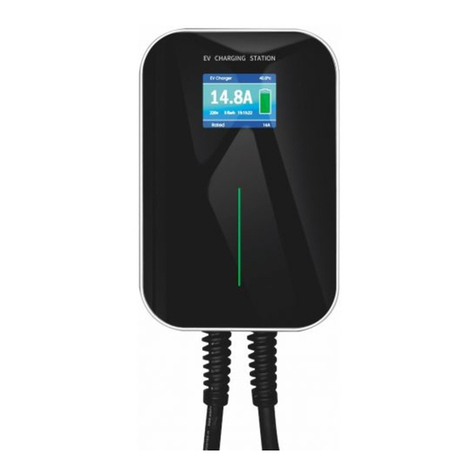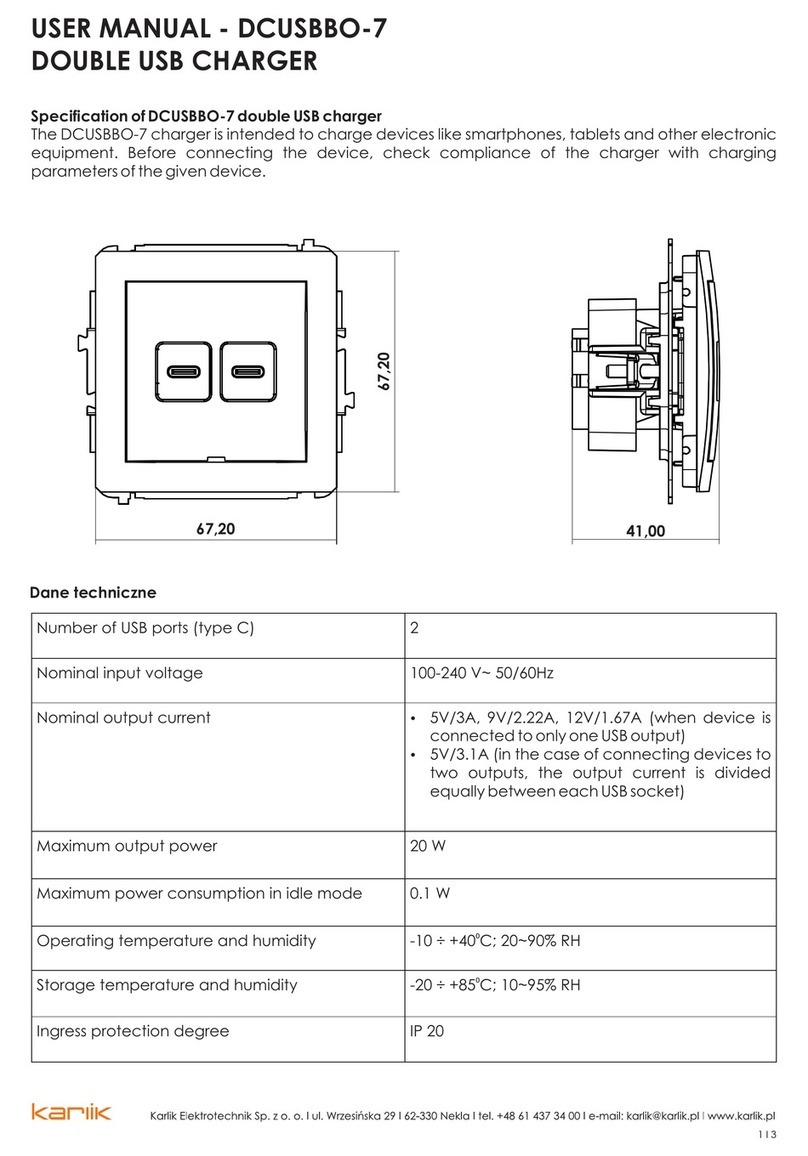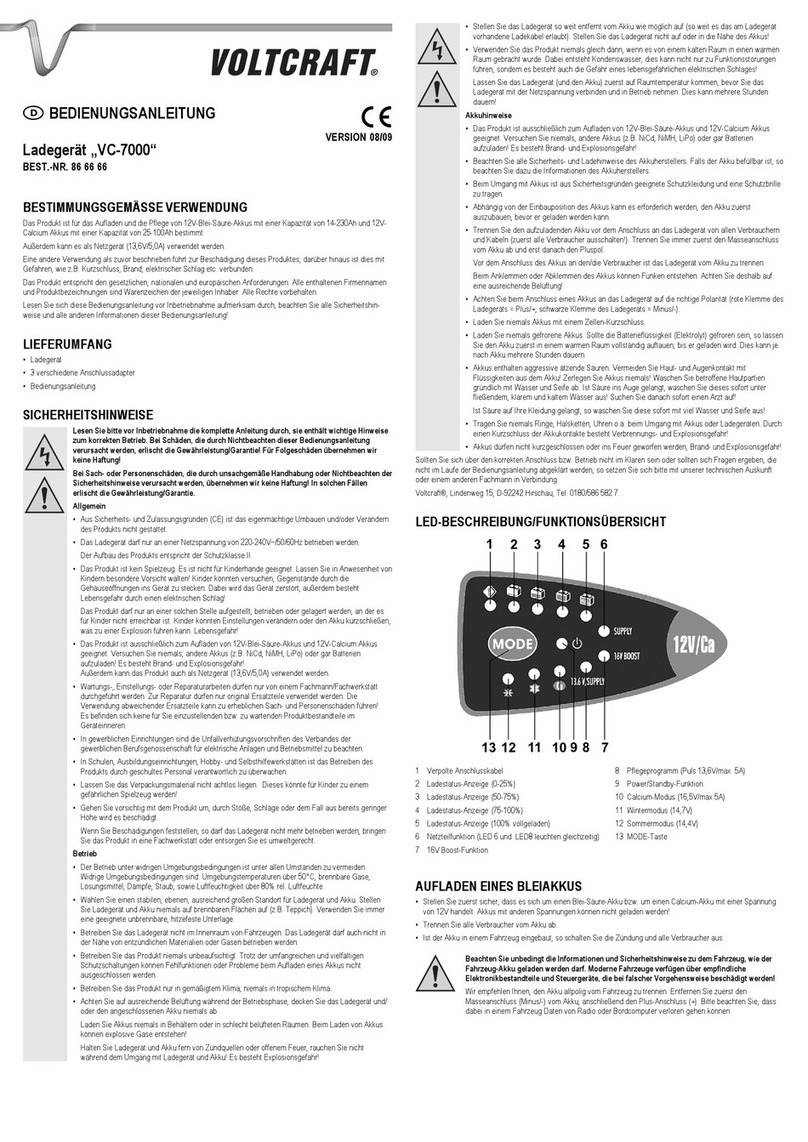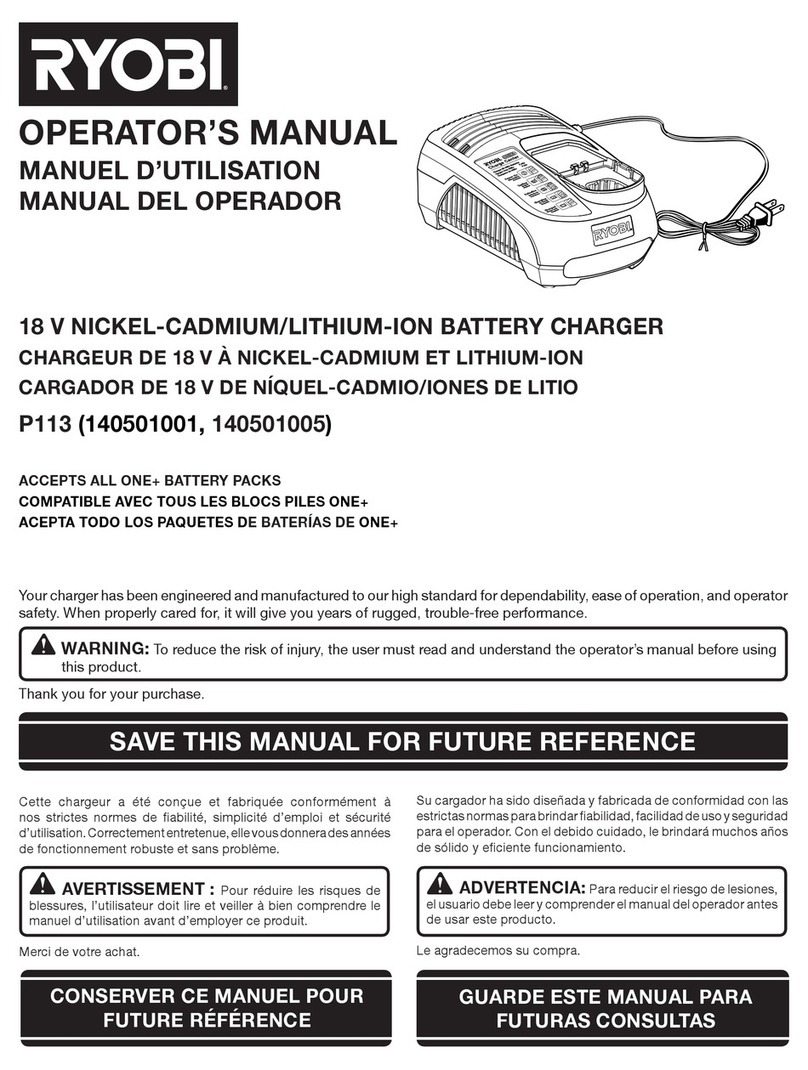ENGLISH
SAFETY INSTRUCTIONS
GOALS OF THIS MANUAL
This manual is aimed at any authorized personnel wanting
to use a single phase POWERTECH IQ charger to recharge
lead acid motive power batteries (vented, XFC FLEX, Gel or
WF200 ranges)
This manual contains information on:
• Charger functionality.
• Use and setting of charger parameters.
• Technical specifications of the Powertech IQ chargers.
EnerSys intends to provide clear and simple information
in this manual, and assumes no responsibility for misunder-
standing or improper interpretation of the information.
The owner of the equipment is required to preserve this
manual during the life of the equipment and to transfer said
manual to any subsequent purchaser.
WARRANTY
Warranty is offered by the manufacturer based on local
regulations. Please contact your local distributor for further
information.
RECOMMENDATIONS
Recommendations for safe operation
This manual should be carefully read, prior to using the
equipment, by anyone intending to use the charger. The
Powertech IQ:
• Must not have its air circulation impaired in any way,
primarily around the air inlet areas. Dust accumulation
must be removed every six months.
• Must be used within its protection norms, and never
be directly in contact with water.
• Must be used only within the temperature range
specified in the technical specifications
• Must not be installed on a surface subject to high
vibration levels (proximity of motors, compressors, etc.).
• Must not be installed close to the batteries in order to
avoid any
gassing that could damage it prematurely.
• Must not be installed in arduous environments such as:
• Harbour applications (saline air),
• Close to cold stores
• External locations with exposure to wind and rain.
Operator safety
All proper precautions must be observed when the
equipment is used in areas where accidents are possible.
Ensure proper ventilation when the charger is used with
lead-acid batteries, due to gassing. Never disconnect the
battery during the charging process.
General warnings
Requirements for use:
• The equipment must be properly grounded (earthed).
• The input voltage must match the charger requirements.
• The battery voltage must match the charger’s
capabilities.
• The battery capacity is within the charger’s range.
ELECTRICAL SAFETY
Safety regulations and requirements must be observed.
Safety devices installed on the electrical supply to the
chargers must be of the proper type and rating. It is
important to ensure that only fuses of the proper
capacity be used, should they need to be replaced.
This charger meets the Class 1 Electrical Safety requirements, and therefore needs to be properly grounded during installation. It must be connected to a power supply equipped with a ground cable, and the ground connection should be as short as possible.
The equipment must be totally disconnected from all power
sources (mains supply and battery) before it can be opened
for inspection or servicing. The battery can only be discon-
nected after the STOP/START button has been pushed.
Access to the inside of the charger should be restricted to
authorized maintenance personnel.
Please consult a qualified factory representative about any
problems or questions related to the installation of this
unit.
LIMITS OF USE
This charger is designed to be used in a sheltered area.
It is designed exclusively to recharge lead batteries in an
industrial environment.
PRODUCT RECYCLING - DESTRUCTION
When this charger becomes obsolete, it can be recycled
or destroyed by authorized facilities. Local regulations will
prevail and must be followed.
MODIFICATIONS AND IMPROVEMENTS
EnerSys reserves the right, at any time, to modify or
improve its products, without any obligation to update
this product or this manual accordingly.
RECEIVING - STORAGE
Upon receipt, please inspect visually the exterior of the
charger for any physical damage. If necessary, proceed
within 24 hours with the usual claims procedure with the
transport company.
If the charger is to be stored before use, it should remain
in the original packaging, carefully closed. Store in a clean,
dry area at a moderate temperature (0 °C to +40 °C). If the
equipment is stored at a temperature below 15°C, it must
be gradually (24 hours) restored to operating temperature
before use, to prevent the risk of condensation that could
cause electrical faults and short-circuits.
INFORMATION PLATE
Located on either side of the charger.
EEC DECLARATION OF CONFORMITY
Enersys hereby declares that the chargers in the
Powertech IQ range covered by this declaration
conform to:
Directive 2006/95/EC: Low voltage Directive
European Standard:
EN60335-1
EN60335-2-29
EN60950-1
Directive 2004/108/EC: Electromagnetic compatibility
EN61000-6-2 : 2001
EN61000-6-4 : 2001
Directive 2002/95/EC: ROHS
Safety and use instructions Powertech IQ - Single phase chargers




